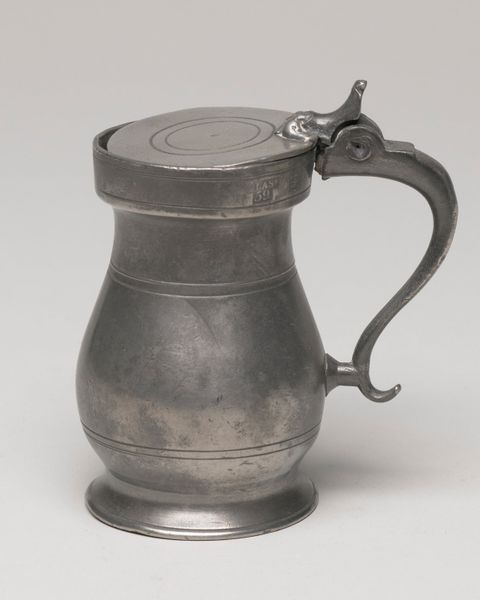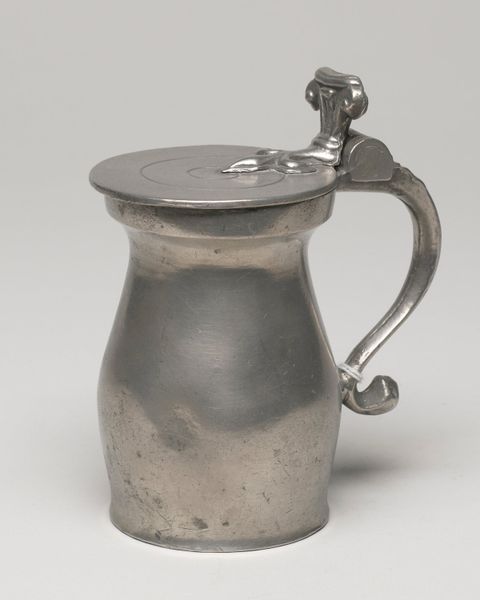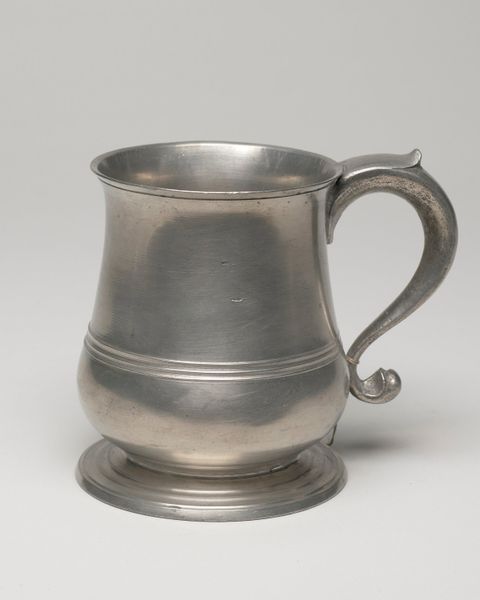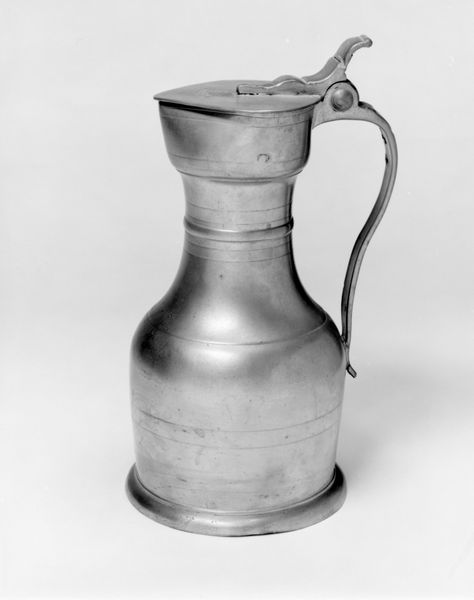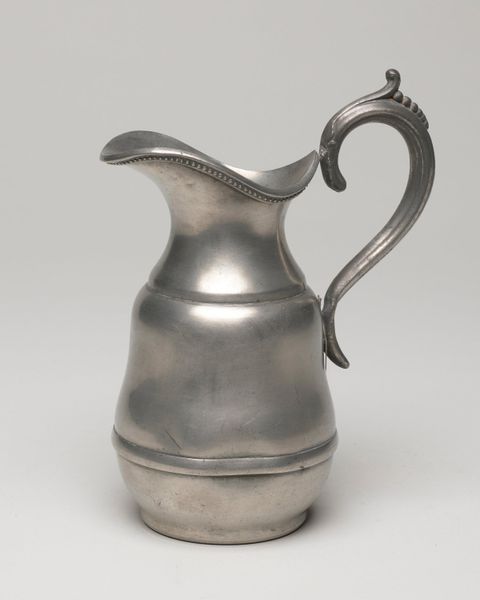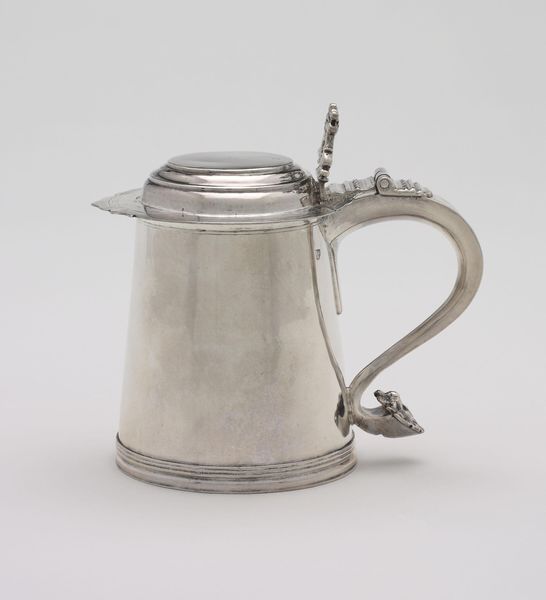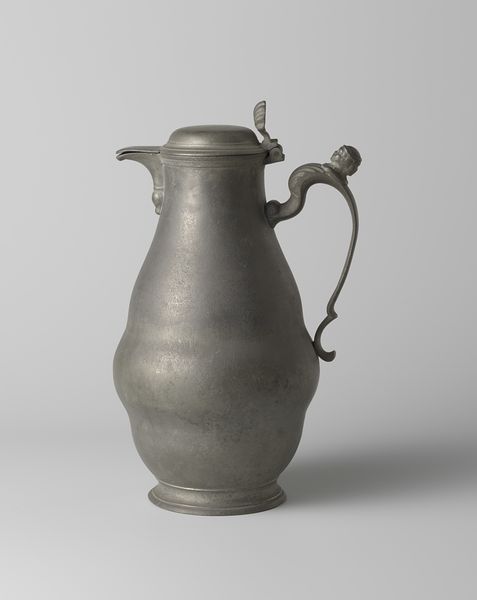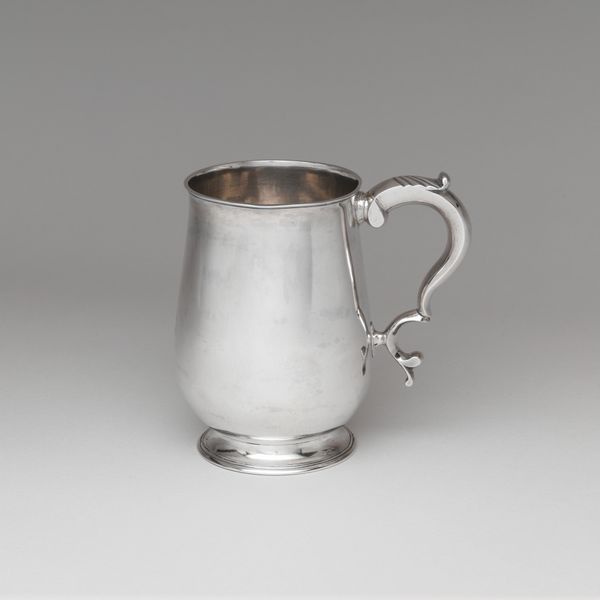
metal
#
baroque
#
dutch-golden-age
#
metal
Dimensions: height 22.5 cm, diameter 13.8 cm
Copyright: Rijks Museum: Open Domain
Curator: Alright, let’s delve into this object: a metal pitcher, dating back to around 1590-1596, part of the Rijksmuseum's collection, labeled as “Household Effects," crafted anonymously. Editor: My first thought? Wabi-sabi. The dents and wear whisper stories; it feels… lived in, like a character in a play that's seen its fair share of feasts and maybe a few scuffles. There's a melancholy beauty there. Curator: That’s interesting because formally, you can read this wear as the entropic disintegration intrinsic to form itself. We witness here the breakdown of structure through time’s relentless pressure. Editor: Oh, that's intense. I'm seeing a sturdy drinking vessel, a bit worse for wear, sure, but still bearing the echoes of past gatherings. Do you think this would have been commonplace, a thing in every household? Curator: Given that we place it historically during both the Dutch Golden Age and Baroque period it is difficult to say if it was "commonplace." The materiality would suggest wealth and this pitcher certainly demonstrates stylistic trends for upper-class drinking implements. What’s curious is this near photographic preservation of degradation: this ruin that suggests time. Editor: Photographic preservation is an interesting way to think about that erosion! And yes, knowing it comes from a time of such exuberance throws the imperfection into sharper relief. Did these metal-workers have to go to long apprenticeships before they were entrusted with works like these? How meticulous were the metal beaters back then? Curator: The piece is so incredibly straightforward that any attempt to find some latent artistic presence in it feels useless. What you are seeking – to feel how they must have done it, I can’t feel myself! What draws my eye, as it must yours too, is the way the pitcher seems frozen, and made still, after having been dropped or damaged sometime in the past. That preservation, for me, almost allows a reading in negative of the Baroque— Editor: It's definitely whispering some ghost stories of the golden age... thanks for the insight.
Comments
rijksmuseum about 2 years ago
⋮
Among the remnants from the ‘Safe House’ were many utilitarian household objects, such as plates, cutlery and brushes. The taps originally were attached to wooden barrels containing water or wine. The ‘spike candleholders’, which could be hammered into a wooden beam, were particularly convenient.
Join the conversation
Join millions of artists and users on Artera today and experience the ultimate creative platform.
